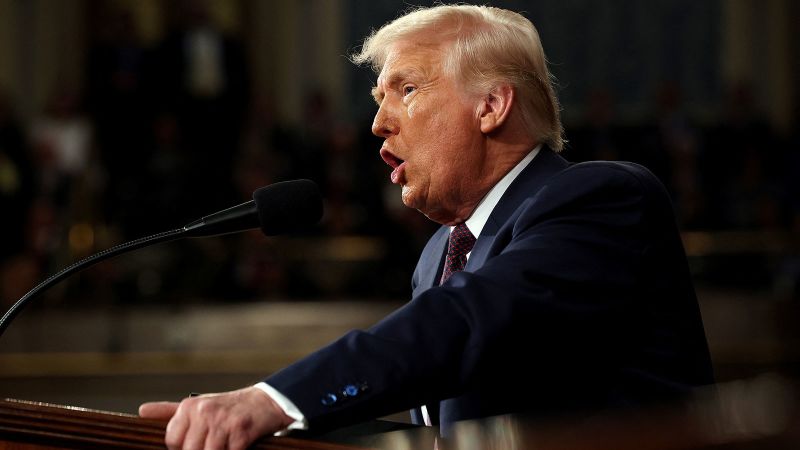The conflict in Gaza has reached yet another pivotal moment as Hamas is now weighing United States ceasefire proposals, following what former President Donald Trump described as his “final warning.” This development has sparked intense debate across the international stage, raising questions about the future of negotiations, the role of U.S. diplomacy, and whether a fragile peace can be achieved after months of devastating violence.
- Trump’s ‘Final Warning’ and Its Global Impact
- Why Hamas Is Considering the Ceasefire Now
- The Role of the United States in the Negotiations
- Regional Powers and Their Influence
- The Humanitarian Crisis Driving Urgency
- Israel’s Position on the Ceasefire Proposals
- International Reactions and Pressure
- Possible Outcomes of Hamas’s Decision
- Expert Perspectives on the Ceasefire Debate
- The Road Ahead for Gaza and the Region
- FAQs
- What did Trump mean by his ‘final warning’ to Hamas?
- Why is Hamas considering U.S. ceasefire proposals now?
- What are the key elements of the U.S. ceasefire proposal?
- How does Israel view the U.S. ceasefire proposals?
- What role do regional powers play in the ceasefire talks?
- Could this ceasefire lead to lasting peace?
- Conclusion
With mounting casualties, rising humanitarian concerns, and growing international pressure, the stakes have never been higher. To understand this turning point, it is crucial to examine the political context, the human cost, and the possible scenarios that may follow Hamas’s consideration of Washington’s latest proposals.
Trump’s ‘Final Warning’ and Its Global Impact
Former U.S. President Donald Trump, who has maintained an outsized influence in American politics and global diplomacy even after leaving office, issued a stern statement characterizing the U.S. ceasefire proposal as a “final warning” to Hamas. The choice of words carried weight, signaling not only Washington’s frustration with the continued hostilities but also Trump’s personal attempt to assert authority on the issue. While current administration officials have sought to handle the crisis with measured diplomatic language, Trump’s intervention introduced a new level of urgency into the discussions.
Analysts note that Trump’s rhetoric resonates with both his supporters and detractors. For some, it underscores his reputation for tough, no-nonsense diplomacy. For others, it highlights the dangers of inflamed rhetoric at such a delicate stage of negotiations. Regardless of interpretation, the declaration had immediate ripple effects: Hamas leadership convened emergency meetings to discuss the proposals, while international allies and rivals alike scrambled to interpret the potential consequences of rejecting U.S. mediation.
Why Hamas Is Considering the Ceasefire Now
Hamas has historically been cautious about engaging with American-led initiatives, often viewing Washington as biased toward Israel. However, the dynamics on the ground in Gaza have shifted dramatically. After months of intense bombardment, critical infrastructure has been destroyed, hospitals are overwhelmed, and more than 30,000 people have reportedly lost their lives, according to humanitarian monitors. International aid agencies estimate that nearly 70 percent of Gaza’s population has been displaced, living in overcrowded shelters with little access to food, clean water, or medicine.
Under these circumstances, Hamas faces a mounting dilemma. On one hand, continuing the fight risks further destruction and potential loss of its political credibility if civilians perceive that leadership is ignoring their suffering. On the other hand, agreeing to U.S. proposals could be viewed as a concession to American and Israeli pressure, potentially weakening Hamas’s narrative of resistance. These competing pressures explain why the group is carefully evaluating the terms, consulting regional allies, and assessing whether the ceasefire would provide meaningful relief or merely serve as a temporary pause.
The Role of the United States in the Negotiations
The U.S. has long been a key player in Middle Eastern peace processes, though not always a trusted one in the eyes of Palestinian factions. In this case, Washington’s proposals are being presented as a balanced framework: a temporary cessation of hostilities, the entry of international humanitarian aid, and the beginning of indirect talks about a long-term political solution. American officials have made it clear that while Israel’s security concerns must be addressed, the humanitarian catastrophe in Gaza cannot be ignored any longer.
Trump’s public intervention complicates matters. Some experts argue that his language risks undermining delicate backchannel negotiations being conducted by U.S. envoys. Others suggest that Hamas may take the warning seriously, recognizing that rejecting the proposal could lead to even harsher consequences if Washington throws its full weight behind Israel’s military strategy. Either way, the U.S. role remains central—both as a guarantor of any deal and as a mediator shaping the post-war trajectory of Gaza.
Regional Powers and Their Influence
No ceasefire discussion in Gaza happens in isolation. Regional players such as Egypt, Qatar, Turkey, and Iran play critical roles in shaping outcomes. Egypt, as a neighbor and traditional mediator, has been instrumental in facilitating communication between Hamas and Israel. Qatar has provided financial aid and diplomatic cover, while Turkey has vocally championed Palestinian rights. Iran, meanwhile, remains Hamas’s most powerful military and ideological ally, supplying weapons, funding, and strategic support.
For Hamas, agreeing to U.S.-backed proposals carries the risk of alienating Iran or appearing to yield under Western pressure. Yet, rejecting them outright could damage relations with countries like Egypt and Qatar, which have invested heavily in humanitarian aid for Gaza. This delicate balancing act highlights why Hamas’s decision-making process is prolonged and cautious.
The Humanitarian Crisis Driving Urgency
The humanitarian situation in Gaza is arguably the single greatest factor pushing Hamas to consider a ceasefire. The United Nations estimates that nearly 80 percent of Gaza’s population now requires urgent humanitarian assistance. More than half of Gaza’s hospitals are non-functional, and children are bearing the brunt of the crisis—reports indicate that thousands have been killed or injured, and many more face malnutrition due to food shortages. International organizations, including UNICEF and Doctors Without Borders, have described the conditions as “catastrophic” and “unprecedented in modern conflict zones.”
Stories from the ground illustrate the depth of suffering. Families have been forced to flee their homes multiple times, carrying what little they can salvage. Parents are struggling to find milk for their infants, and doctors are performing surgeries without anesthesia. In this context, the pressure on Hamas to agree to a ceasefire is not just political—it is humanitarian, as the population’s survival depends on immediate relief.
Israel’s Position on the Ceasefire Proposals
For Israel, U.S.-backed ceasefire proposals present both opportunities and challenges. On one hand, they offer a chance to reduce international criticism over the scale of military operations and open the door to discussions about hostage releases and long-term security guarantees. On the other hand, Israeli leaders remain wary of granting Hamas any legitimacy or allowing the group to regroup during a pause. Prime Minister Benjamin Netanyahu has consistently maintained that Israel will not halt operations until Hamas’s military infrastructure is dismantled, creating a potential roadblock to Washington’s plan.
This tension underscores the complexity of the moment. While the U.S. is urging both sides toward compromise, Israel’s domestic political landscape and Hamas’s ideological commitments make a breakthrough difficult. The coming weeks will reveal whether American pressure, combined with regional mediation, can bridge the divide.
International Reactions and Pressure
Beyond the region, international reactions to Hamas’s consideration of U.S. proposals have been mixed but largely supportive of efforts to halt the bloodshed. European leaders, including France and Germany, have welcomed the idea of a ceasefire as a first step toward resuming political talks. The United Nations Secretary-General has reiterated calls for an immediate cessation of hostilities, emphasizing the urgent need to restore humanitarian access. Civil society movements worldwide have amplified these appeals, with protests in major cities demanding an end to the violence.
At the same time, skepticism remains high. Human rights organizations caution that previous ceasefires have collapsed quickly, leading to cycles of renewed violence. Critics argue that unless the underlying issues—such as the blockade of Gaza, Palestinian statehood, and security guarantees for Israel—are addressed, any pause will be temporary. This perspective underscores the fragility of the current moment, even as hope for relief grows.
Possible Outcomes of Hamas’s Decision
If Hamas accepts the U.S. proposals, it could mark the beginning of a longer diplomatic process aimed at reshaping the future of Gaza. Humanitarian aid would flow more freely, international monitors could enter the territory, and indirect negotiations about governance and reconstruction might follow. For civilians, such a decision would offer immediate relief and the possibility of rebuilding shattered lives.
However, if Hamas rejects the proposals, the consequences could be dire. Israel may intensify its military campaign, while Washington could withdraw any diplomatic cover for Gaza. In that scenario, the suffering of civilians would worsen, and Hamas could find itself more isolated internationally. Either choice carries risks, but the potential for meaningful change lies in seizing the opportunity for dialogue, however imperfect.
Expert Perspectives on the Ceasefire Debate
Experts in Middle Eastern politics stress that while the U.S. proposals are not a comprehensive peace plan, they represent a critical step toward de-escalation. Dr. Lina Khoury, a political scientist specializing in conflict resolution, explains: “This moment is less about solving the conflict entirely and more about preventing further humanitarian collapse. A ceasefire is the minimum requirement to create space for future negotiations.” Others warn that without addressing root causes such as occupation, borders, and the blockade, any ceasefire risks being another temporary measure.
The debate among experts reflects the larger tension between pragmatism and idealism. Some argue that even a flawed ceasefire can save lives in the short term, while others believe that accepting incomplete measures risks perpetuating the cycle of violence indefinitely.
The Road Ahead for Gaza and the Region
Regardless of Hamas’s decision, the road ahead will be long and difficult. Gaza’s reconstruction needs are staggering, estimated in the tens of billions of dollars. Regional actors will need to coordinate not only humanitarian aid but also political frameworks to ensure stability. For the U.S., maintaining credibility as a mediator requires consistent engagement, not just crisis-driven interventions. For Hamas, the challenge lies in balancing ideological commitments with the practical needs of its people.
The international community faces a crucial test: can it create conditions where ceasefires lead to genuine peace, or will this moment become another entry in the long history of missed opportunities?
FAQs
What did Trump mean by his ‘final warning’ to Hamas?
Trump’s phrase “final warning” was intended to signal urgency and pressure Hamas into considering U.S. ceasefire proposals. It reflects his characteristic direct rhetoric but also raises concerns about escalating tensions in delicate negotiations.
Why is Hamas considering U.S. ceasefire proposals now?
Hamas is facing immense pressure due to the humanitarian crisis in Gaza, with tens of thousands killed, widespread displacement, and collapsing infrastructure. The dire situation makes a ceasefire more urgent than ever.
What are the key elements of the U.S. ceasefire proposal?
The U.S. plan reportedly includes a temporary halt to hostilities, increased humanitarian aid, and indirect discussions about long-term solutions for Gaza’s governance and security.
How does Israel view the U.S. ceasefire proposals?
Israel is cautious. While the proposals could reduce international criticism and facilitate hostage negotiations, Israeli leaders fear they may give Hamas time to regroup and rebuild its military capacity.
What role do regional powers play in the ceasefire talks?
Countries like Egypt, Qatar, Turkey, and Iran significantly influence Hamas’s decision-making. Egypt and Qatar act as mediators and aid providers, while Iran offers military support, shaping the strategic calculus.
Could this ceasefire lead to lasting peace?
Experts are divided. Some see the ceasefire as a necessary step toward broader negotiations, while others warn it could be a temporary pause unless root issues like occupation and blockade are addressed.
Conclusion
The fact that Hamas is considering U.S. ceasefire proposals following Trump’s “final warning” marks a critical moment in the ongoing Gaza conflict. The humanitarian catastrophe has reached unsustainable levels, pushing all sides toward a potential pause in violence. While skepticism about long-term peace remains, this moment offers a rare window for diplomacy, humanitarian relief, and renewed dialogue.
The choices made in the coming days will determine not only the future of Gaza but also the trajectory of U.S. influence in the Middle East and the prospects for stability in a region that has endured decades of turmoil.








